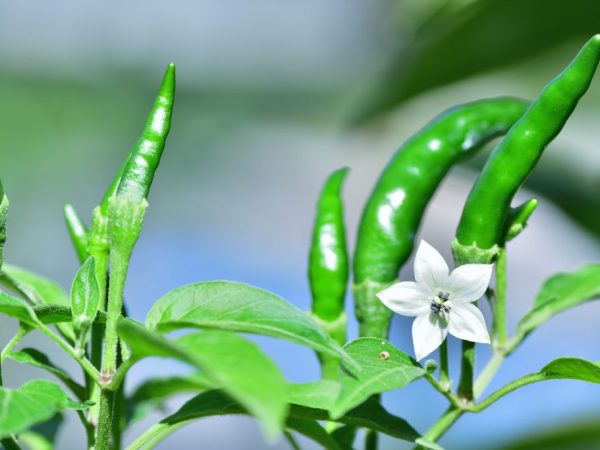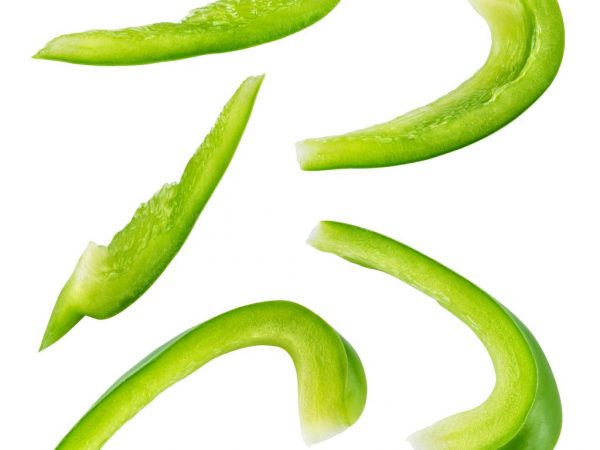The benefits and harms of capsicum
Capsicums come in many varieties. This feature made it so famous. There are several of the most well-known species that housewives often use in cooking. These are bell peppers, bitter red or chili peppers. The types of culture differ in appearance, taste, composition and culinary use.

The benefits and harms of capsicum
Description of the vegetable
Another name is hot pepper or chili (chilli pepper - red pepper).
Pepper belongs to the herbal plants of the Capsicum class of the Solanaceae family. It is not related to black pepper, which belongs to the Pepper family. The varieties of this culture are divided into bitter and sweet.
Depending on the variety, vegetables can be of various shapes and sizes. The bush is low, about 0.5 m, with oval leaves of different sizes.
The color of the fruits is different: from dark green to bright red. The flowers are large, can grow in bunches or alone. Corollas are white and green.
A native vegetable crop from America. It is grown all over the world. The vegetable loves warmth and a lot of moisture. It grows well at a temperature of 18-25 ° C, in a well-fertile soil.
Structure and nutritional value
100 g of bitter red capsicum contains:
- about 40 kcal;
- 0.4 g fat;
- 1.9 g protein;
- includes carbohydrates 7.3 g.
Capsicum also contains the necessary vitamins:
- 0.6 mg vitamin A;
- 0.5 mg of vitamin B6: the most important vitamin of a vegetable, it helps the metabolism of amino acids - amino acids are essential for building protein, it controls human health and preserves youth for many years;
- vitamin C - 140 mg;
- vitamin K - 14 mcg.
Hot peppers contain minerals:
- Potassium - 320 mg. A person needs it for good brain function, and also helps the functioning of the heart, muscles and removes allergic reactions.
- Manganese - 0.19 mcg.
- Copper - 130 mcg. Copper is very useful for the human brain, it has a positive effect on the nervous system and takes part in the metabolic processes of the body.
- Among fatty acids, omega is isolated in the amount of 0.33 g.
Varieties of varieties
America is the birthplace of red capsicum. It includes all hot and hot peppers. There are approximately 500 varieties around the world. The fruits are of a variety in which they are divided into taste, color, appearance and pungency. Among the most famous are 5 varieties.
- Anaheim variety is green, elongated. There is sharpness, but soft.
- Banana variety - the skin is thin, the shape is long. There are not many seeds inside the pepper. This type of vegetable is often used for seasoning.
- Cayenne - wrinkled skin, twisted shape. The aroma is tart, and the taste is quite pungent.
- The Padron variety has a twisted shape. The fruits are quite bitter, they are often used for savory seasonings.
- Serrano is red in color and long in shape. It tastes slightly sour.
Useful qualities
If you do not overuse the vegetable, then it will only be beneficial.It helps to normalize blood circulation in the body, restore the respiratory system, and improve bowel function.
The fruits of red capsicum help in the production of the hormone of joy in the human body. For example, endorphins, which inhibit stress and increase immunity.

Pepper is widely used
It contains antibacterial, antidiabetic and pain relieving agents.
The vegetable also has such positive aspects:
- normalizes the work of the heart: reduces the amount of cholesterol, so the chances of atherosclerosis and thrombosis are also reduced;
- red capsicum helps to lose weight: not many may know about such a feature, the vegetable controls the correct metabolism, separates fat cells;
- helps with headaches;
- it is often used to prevent diseases of the stomach and intestines: relieves inflammation, kills all bacteria in the body that contribute to the appearance of gastritis;
- normalizes pressure;
- prevents colds and various infectious diseases;
- paprika is used for psoriasis and diabetes;
- a spicy red vegetable is very useful for men: it restores and strengthens masculine strength - those who use this culture from time to time will be able to significantly increase their testosterone levels;
- benefits are provided by the pulp of the fruit and its seeds: the seeds contain many vitamins and microelements.
Application in cosmetology
Red capsicum is used not only in cooking, but also in cosmetology. The vegetable has a positive effect on hair and nails. The fruit is often added to shampoos and hair masks.
In addition, there are toothpastes that contain pepper, because it improves the condition of the gums. Since the fruits help to lose extra pounds, they are added to special anti-cellulite creams.
Application in traditional medicine
Infusions or ointments based on this culture are very useful for those people who suffer from polyarthritis, gout and rheumatism. Healing ointment is not difficult to prepare yourself at home.
To prepare the ointment, take a tincture of red pepper, which you can buy at the pharmacy or prepare yourself. Also for the ointment, take vegetable oil in parts 1: 3 and mix everything. The ointment is used for rubbing the body during frost periods. To prepare the tincture, take the following ingredients:
- 5 fresh or 5 dried fruits;
- then they are cut into small pieces or grind with a blender;
- the resulting product is poured with alcohol or vodka 0.75 l;
- the drink is transferred to a dark place for 10-14 days;
- every day it is necessary to beat the container so that the products are well mixed;
- after the allotted time, the tincture is filtered and taken.
Homemade tincture can be added to hair masks for 1 tbsp. l.
Application during pregnancy
Pepper is allowed to eat for pregnant women. It will help remove discomfort during pregnancy. For example, nausea or vomiting. But you should not eat a lot of it, because spicy food, as a rule, causes heartburn in pregnant women, drinking plenty of fluids and shrinking the uterus.
A woman who is breastfeeding a baby can also eat a spicy vegetable. It will not harm the child and mother.
Childhood use
Bitter capsicum is allowed to be eaten by children from 12-13 years old. But preferably not too spicy. At this age, the child's stomach is sensitive to new tastes, so it can burn itself.
Vegetable harm
In addition to the benefits, chilli also carries harm. It can cause allergies in a person. It is forbidden to use it for people with the following problems:
- if a person has a serious form of heart disease, arrhythmia and angina pectoris;
- it is forbidden to use ointment or cream if there are wounds or scratches on the skin;
- the vegetable should not get into the mucous membrane of the body - after that it will cause irritation or burns.
If a person loves to eat pepper, he should know what benefits and harm it will bring to the body, and carefully study all the information about it.Basically, it has a positive effect on the human body if consumed in reasonable amounts.


